Phonics Teaching Resources
Make teaching phonics easy with printable phonics worksheets, activities, games and more designed for primary teachers.
This collection of Australian curriculum-aligned teaching resources has been carefully reviewed by our expert teaching team to make sure every resource is classroom-ready — so we can make your lesson planning easier!
New to teaching phonics, or just looking for new ways to engage your students? Read on for a primer from our teacher team!
What Is Phonics?
You've likely heard the word 'phonics' thousands of times throughout your own education and maybe on one of those old as from the '90s. But what is phonics, exactly?
Phonics is technically defined as the systematic instruction of the relationships between letters and sounds in written language. But that's a mouthful, isn't it? More simply, phonics is the word we use to refer to the method of teaching reading by focusing on the relationship between written letters and the sounds they represent.
In phonics, kids learn how to decode written words by recognising the sound-symbol correspondence.
Phonics vs. Phonemic Awareness
When we start talking about letters and their sounds, we start to wander into phonemic awareness territory. So what's the difference?
The words phonics and phonemic are similar, and the two concepts are — surprise, surprise — related. But there are key differences.
Phonemic awareness is essentially the ability to identify and manipulate individual sounds — aka phonemes — in spoken language. It's those individual sounds and their correspondence to the letter symbols that can be used by kids to then decode written words.
So students learn to recognise the individual sounds of spoken language (phonemes) and how these sounds can be represented by letters (graphemes) in written language. Then they apply this knowledge to decode written words by understanding the sound-symbol correspondence.
Consider this example:
- Let's say your student can identify the separate sounds in a spoken word such as 'cat' (i.e., /k/ /a/ /t/). That's phonemic awareness.
- Now let's say you're teaching that same student that the letter 'c' represents the /k/ sound and that the letter 'a' represents the /a/ sound, and that these sounds combine to form the word 'cat.' That's phonics!
How to Teach Phonics in Primary School
OK, you probably already know that phonics is all about teaching word recognition via grapheme-phoneme associations and letter-sound correspondences.
It’s a means of teaching early readers the pieces that make up a word so they can blend them together to decode the English language as readers and writers.
But how do you teach it?
In the earliest stages, phonics instruction typically begins with teaching students the most common letter-sound relationships. You start with consonants, then move on to vowels, then consonant blends.
Students then learn to sound out words by decoding the letters and blending the sounds together to form words.

Phonics Vocabulary Terms to Remember
The English language system is one of the hardest to teach and learn, so how do you teach phonics? Let’s start with the phonics vocabulary.
- For starters, there are 26 letters that create approximately 44 phonemes, the word for the individual speech sounds that make up words. Put together, phonemes make words. OK, easy enough, right?
- Well, these phonemes can be written in more than 200 different letter combinations, known as graphemes. Graphemes can be made up of 1 letter (such as 'p' in 'pig'), 2 letters (such as 'gh' in ghost), 3 letters (such as 'igh' in night), or 4 letters (such as 'ough' in rough).
- Then there are digraphs or two letters that work together to make one sound — such as “ph” in graph. But wait, isn’t that a grapheme? Yup, a digraph is a type of grapheme.
- So is a trigraph, trigraphs, aka three letters that work together to make one sound, such as 'dge' in edge.
- And if you’re teaching phonics, you can’t forget dipthongs, the name for a sound that is formed by the combination of two vowels in a single syllable, such as 'ou' in loud.
Most students will spend foundation, year 1 and even year 2 getting a handle on all phonics elements!
- Plus Plan
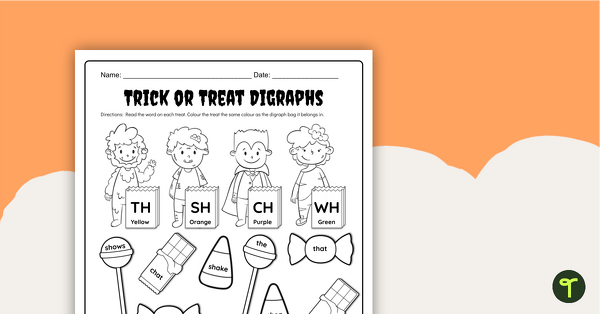
Trick or Treat Digraphs Worksheet
Sort Halloween Digraphs and colour them by code with a fun Halloween Phonics worksheet.
- Plus Plan
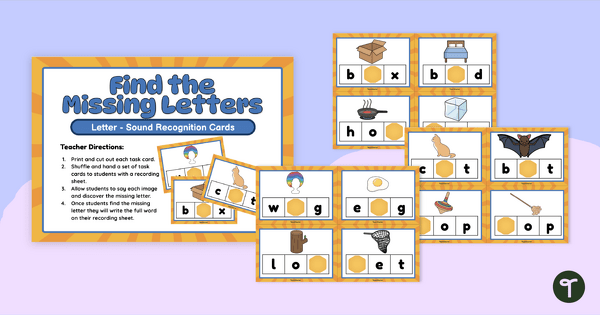
Missing Letters - Letter-Sound Recognition Task Cards
Buzz into letter-sound correspondence with this honey-themed missing letter task card set.
- Plus Plan
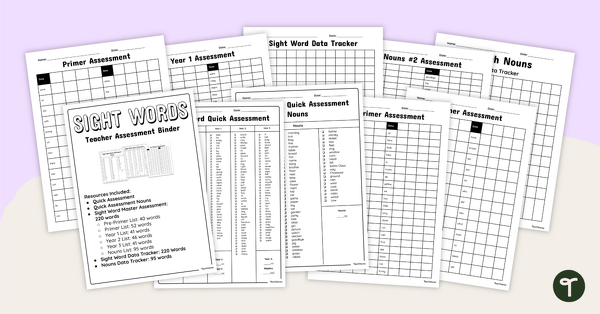
Literacy Teaching Toolkit - Sight Word Assessments
Track Dolch sight word mastery with this set of printable assessments and data sheets to add to your literacy teaching toolkit.
- Plus Plan
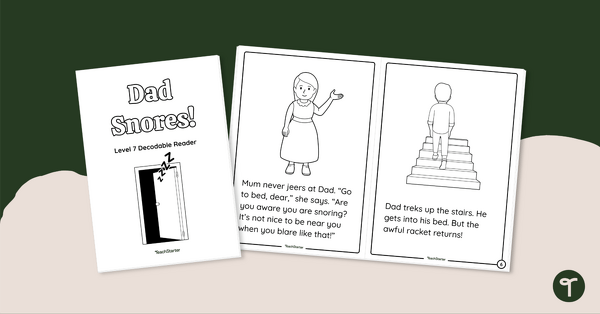
Dad Snores! - Decodable Reader (Level 7)
Develop confident, successful readers with this phonics-based, printable decodable book.
- Plus Plan
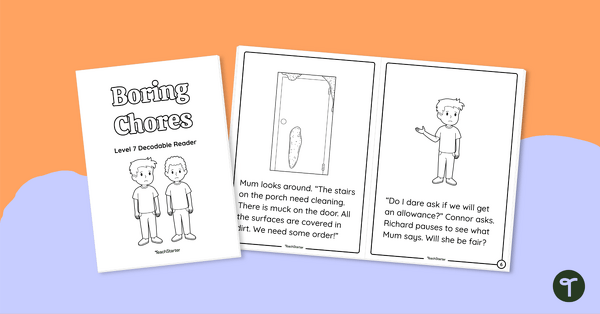
Boring Chores - Decodable Reader (Level 7)
Develop confident, successful readers with this phonics-based, printable decodable book.
- Plus Plan
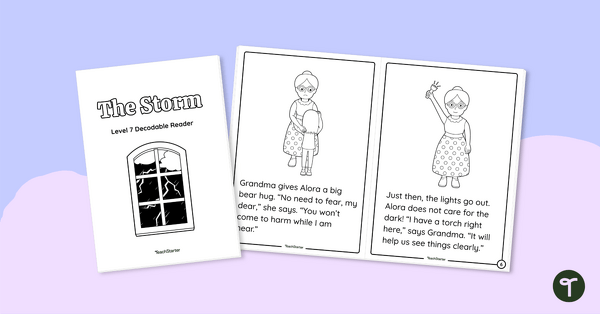
The Storm - Decodable Reader (Level 7)
Develop confident, successful readers with this phonics-based, printable decodable book.
- Plus Plan

The Birthday Surprise - Decodable Reader (Level 6)
Develop confident, successful readers with this phonics-based, printable decodable book.
- Plus Plan
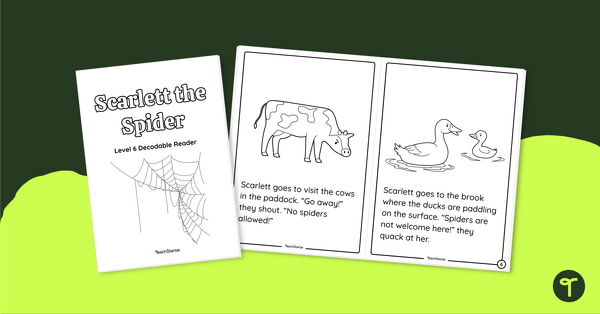
Scarlett the Spider - Decodable Reader (Level 6)
Develop confident, successful readers with this phonics-based, printable decodable book.
- Free Plan
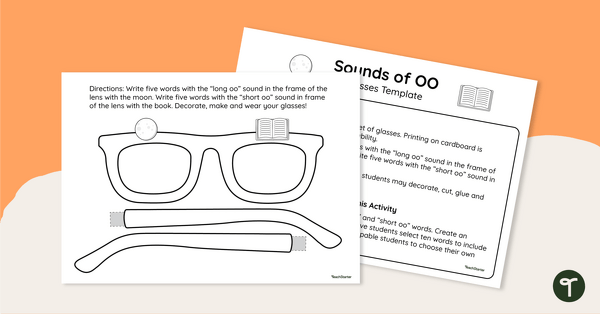
Sounds of OO - Glasses Template
Review the long and short ‘oo’ sound by creating a pair of ‘sOOper’ funky glasses!
- Plus Plan
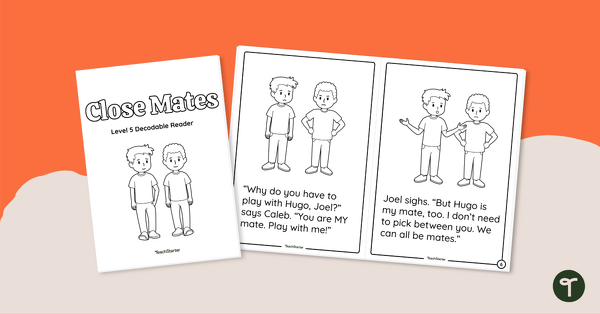
Close Mates - Decodable Reader (Level 5)
Develop confident, successful readers with this phonics-based, printable decodable book.
- Free Plan
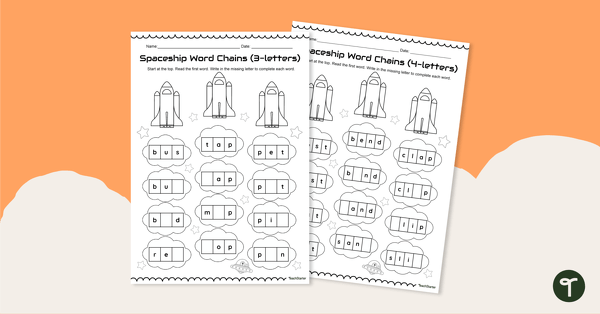
Spaceship Word Chains - Worksheets
Manipulate the individual phonemes in 3- and 4-letter words to create new ones with this set of word chain worksheets.
- Plus Plan
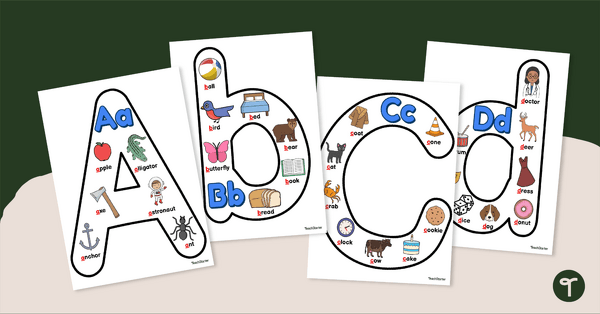
Alphabet Display (Letters and Images)
Display these lowercase and uppercase letter posters with images that begin with each letter.
- Plus Plan
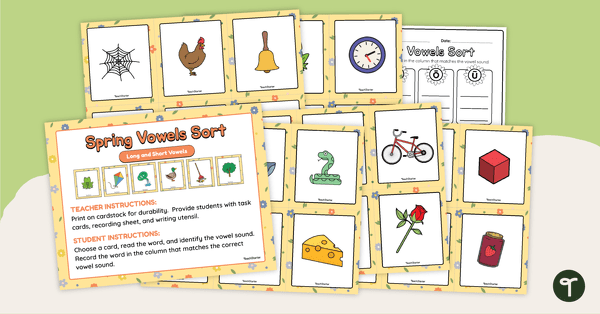
Short and Long Vowel Sorting Activity - Spring
Practise distinguishing short and long vowels with a fun literacy station sorting activity.
- Plus Plan
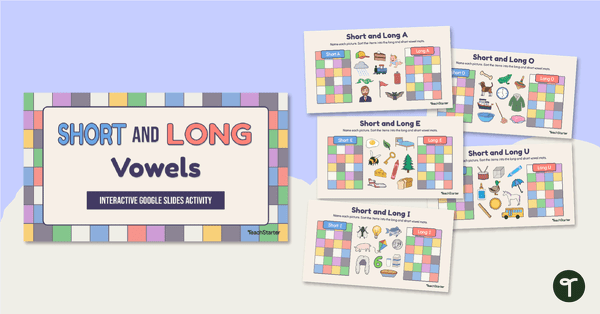
Short and Long Vowels Interactive Activity
Help develop students' phonemic awareness with this interactive activity on short and long vowel sounds.
- Plus Plan

Gingerbread Phonics - Letter-Sound Correspondence Sort
Have some sweet Christmas reading fun with a gingerbread-themed letter-sound correspondence sorting activity.
- Plus Plan
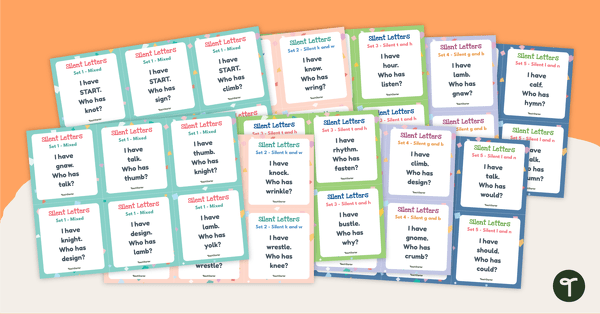
I Have, Who Has? Game - Silent Letters
Review silent letters in one- and two-syllable words with this whole-class literacy game.
- Plus Plan
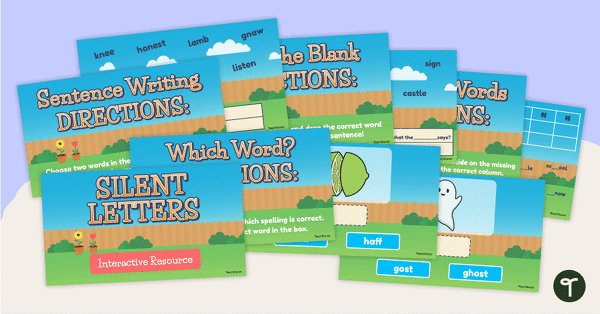
Silent Letters Interactive Activity
Explore silent letters in one- and two-syllable words with this interactive spelling activity.
- Plus Plan
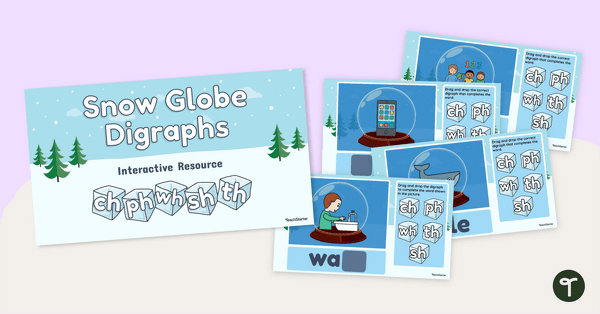
Snow Globe Digraphs - Google Interactive Activity
Bring some winter fun into your phonics lessons with this interactive snow globe activity.
- Plus Plan
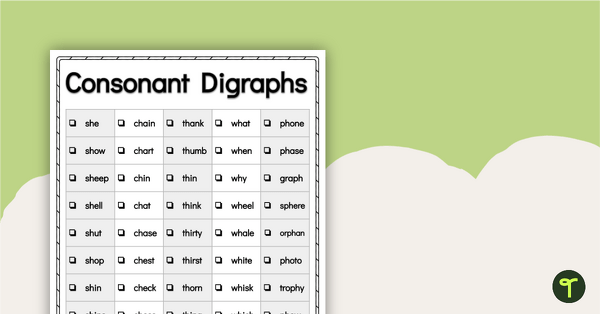
Word Study List - Consonant Digraphs
Introduce and explore common consonant digraphs with this extensive list of words.
- Plus Plan
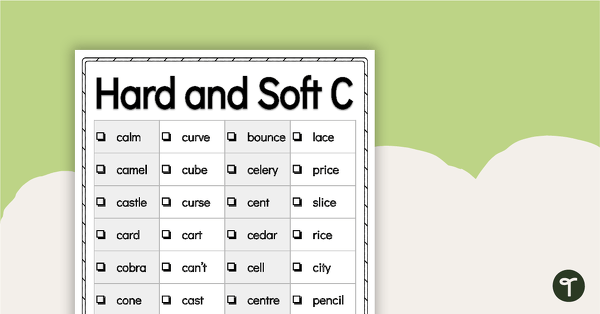
Word Study List - Hard and Soft C
Introduce and explore words containing the hard and soft c with this extensive list of words.
- Plus Plan
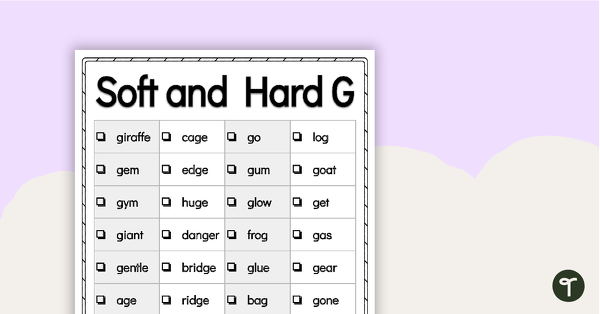
Word Study List - Hard and Soft G
Introduce and explore words containing the hard and soft g with this extensive list of words.
- Plus Plan

Word Study List - Prefixes
Introduce and explore common prefixes with this extensive list of words.
- Plus Plan
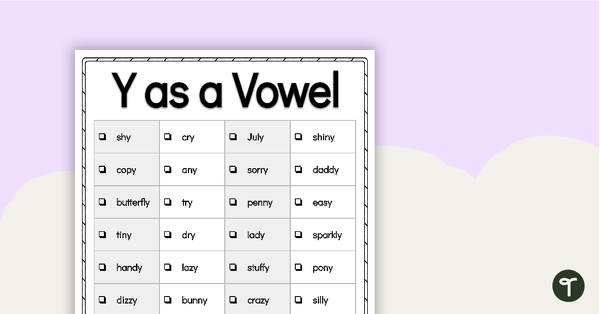
Word Study List - Y as a Vowel
Introduce and explore words containing the letter ‘y’ making a vowel sound with this extensive list of words.
- Plus Plan
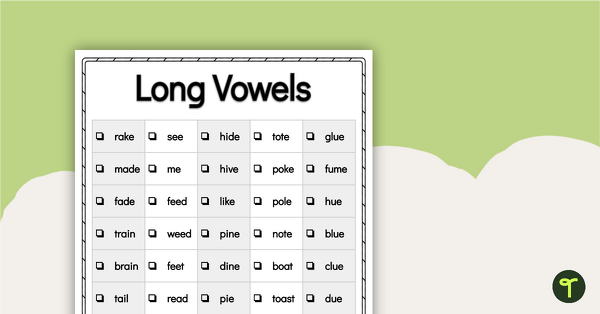
Word Study List - Long Vowels
Introduce and explore words containing graphemes that make long vowel sounds with this extensive list of words.
- Plus Plan
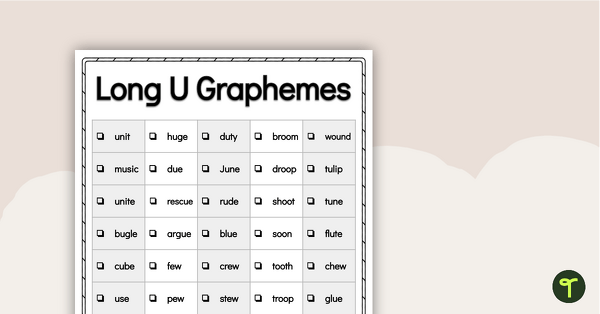
Word Study List - Long U Graphemes
Introduce and explore words containing graphemes that make the ‘long u’ sound with this extensive list of words.
- Plus Plan
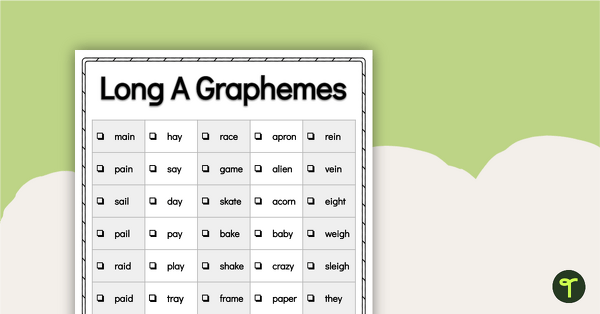
Word Study List - Long A Graphemes
Introduce and explore words containing graphemes that make the ‘long a’ sound with this extensive list of words.
- Plus Plan
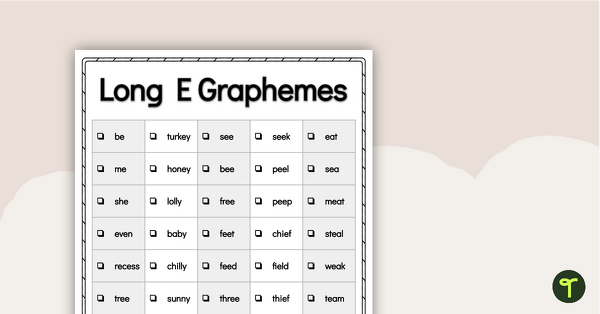
Word Study List - Long E Graphemes
Introduce and explore words containing graphemes that make the ‘long e’ sound with this extensive list of words.
- Plus Plan
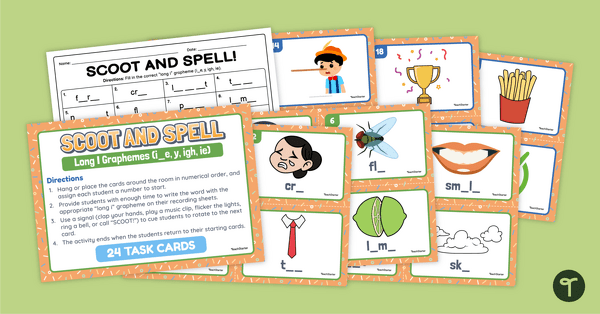
Long I Graphemes - SCOOT! Task Cards
Explore words containing graphemes that make the ‘long i’ sound with this active classroom game that will get your students moving!
- Plus Plan
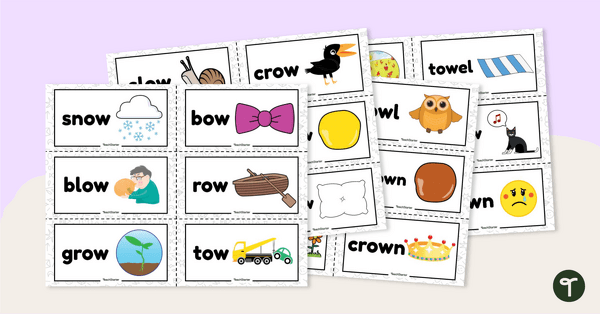
The OW Digraph - Sorting Activity
Practise reading words containing the 'ow' digraph using this hands-on sorting activity.
- Plus Plan

FIND IT! Long and Short Vowels - Task Cards
Practice distinguishing between short vowel sounds and long vowel sounds with this set of 16 task cards.
- Plus Plan
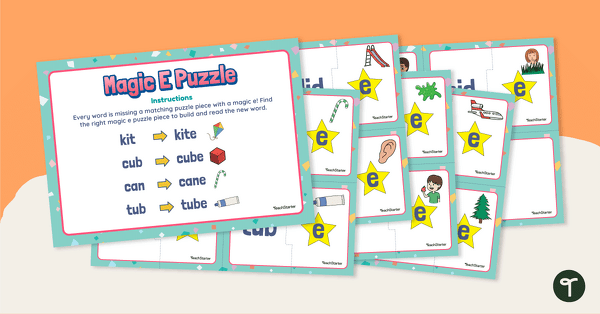
Magic E Words - Match-Up Activity
Explore words containing long vowel sounds created by the magic e.
- Plus Plan
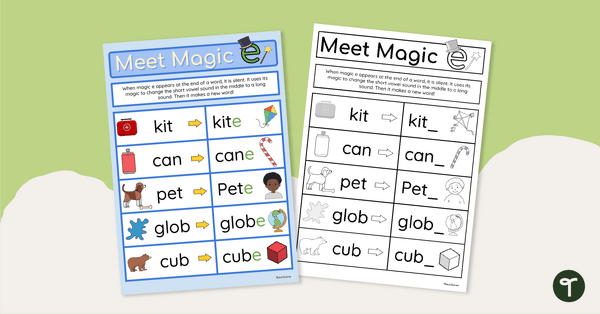
Meet Magic E - Poster
Display this educational poster in your classroom to remind your students how words can be transformed by the magic e!